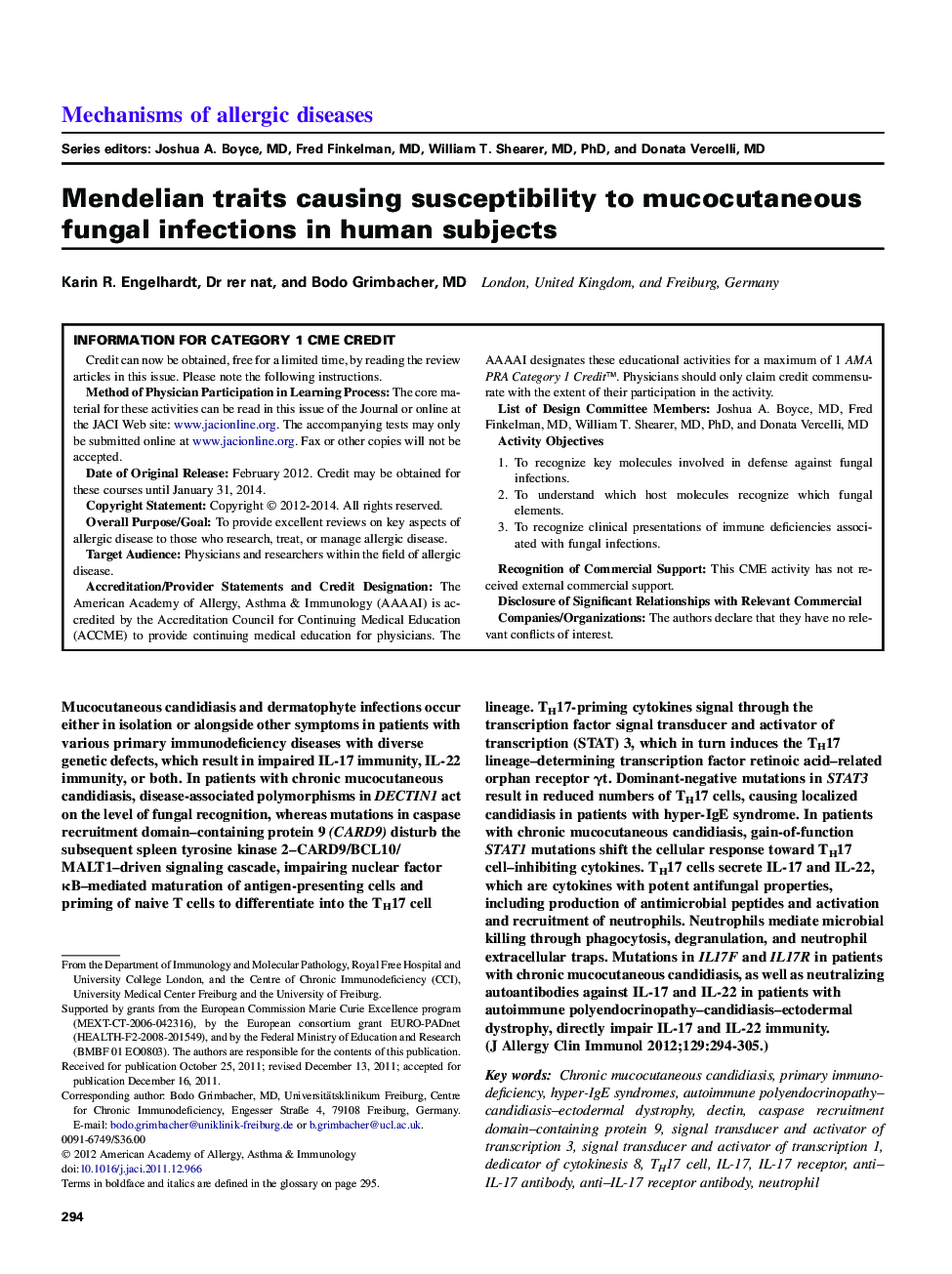| Article ID | Journal | Published Year | Pages | File Type |
|---|---|---|---|---|
| 3199104 | Journal of Allergy and Clinical Immunology | 2012 | 12 Pages |
Mucocutaneous candidiasis and dermatophyte infections occur either in isolation or alongside other symptoms in patients with various primary immunodeficiency diseases with diverse genetic defects, which result in impaired IL-17 immunity, IL-22 immunity, or both. In patients with chronic mucocutaneous candidiasis, disease-associated polymorphisms in DECTIN1 act on the level of fungal recognition, whereas mutations in caspase recruitment domain–containing protein 9 (CARD9) disturb the subsequent spleen tyrosine kinase 2–CARD9/BCL10/MALT1–driven signaling cascade, impairing nuclear factor κB–mediated maturation of antigen-presenting cells and priming of naive T cells to differentiate into the TH17 cell lineage. TH17-priming cytokines signal through the transcription factor signal transducer and activator of transcription (STAT) 3, which in turn induces the TH17 lineage–determining transcription factor retinoic acid–related orphan receptor γt. Dominant-negative mutations in STAT3 result in reduced numbers of TH17 cells, causing localized candidiasis in patients with hyper-IgE syndrome. In patients with chronic mucocutaneous candidiasis, gain-of-function STAT1 mutations shift the cellular response toward TH17 cell–inhibiting cytokines. TH17 cells secrete IL-17 and IL-22, which are cytokines with potent antifungal properties, including production of antimicrobial peptides and activation and recruitment of neutrophils. Neutrophils mediate microbial killing through phagocytosis, degranulation, and neutrophil extracellular traps. Mutations in IL17F and IL17R in patients with chronic mucocutaneous candidiasis, as well as neutralizing autoantibodies against IL-17 and IL-22 in patients with autoimmune polyendocrinopathy–candidiasis–ectodermal dystrophy, directly impair IL-17 and IL-22 immunity.
